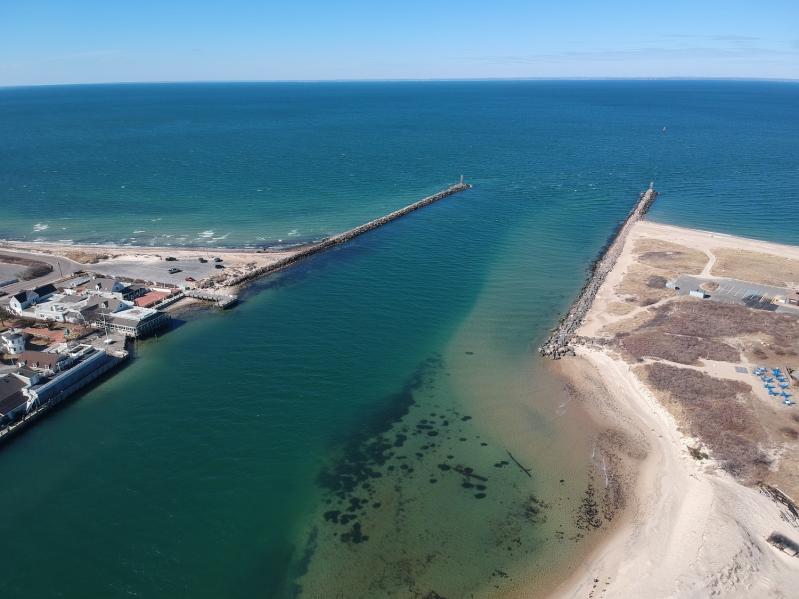The United States Army Corps of Engineers has successfully completed an emergency dredging project at the Lake Montauk Inlet.
East Hampton Town Councilman David Lys had begun sounding the alarm about shoaling in the inlet last year after hearing from fishermen at Montauk Citizens Advisory Committee meetings. He worked with the New York State Department of Environmental Conservation and the federal government to bypass environmental restrictions and secure funding for the project.
The dredged sand was deposited along the beach to the west of the inlet. “Lake Montauk is home to one of the largest commercial fishing fleets in New York, and this project was essential to ensuring the long-term sustainability of our working waterfront,” said Councilman Lys, in a press release. “Maintaining safe navigational depths is critical not just for our fishing industry, but also for the many recreational boaters, charter operators, and emergency personnel who rely on these waters.”
The inlet had been reduced to water depths of three feet in some areas, according to pre-dredging surveys by the Army Corps, but is now cleared to 12 feet, making the inlet safe again for the Montauk fishing fleet and other vessels.
“This project was about more than just removing sediment, it was about restoring a lifeline for our community,” said Town Supervisor Kathee Burke-Gonzalez. “Lake Montauk plays a critical role in our town’s economy and way
of life, and this project ensures it remains safe and accessible for everyone.” In mid-February, Representative Nick LaLota held a press conference at the inlet to announce the commencement of dredging, highlighting the urgency of the project.
“This is what good government looks
like,” he said, at the time. “We are here today because of a united effort from all levels of government to respond swiftly to a critical need in our community. I am especially grateful to the U.S. Army Corps of Engineers for their swift response to our request for immediate action, as they are the ones doing the heavy lifting here, quite literally.”
In the fall, the inlet is scheduled to be dredged again, to a depth of 17 feet.




